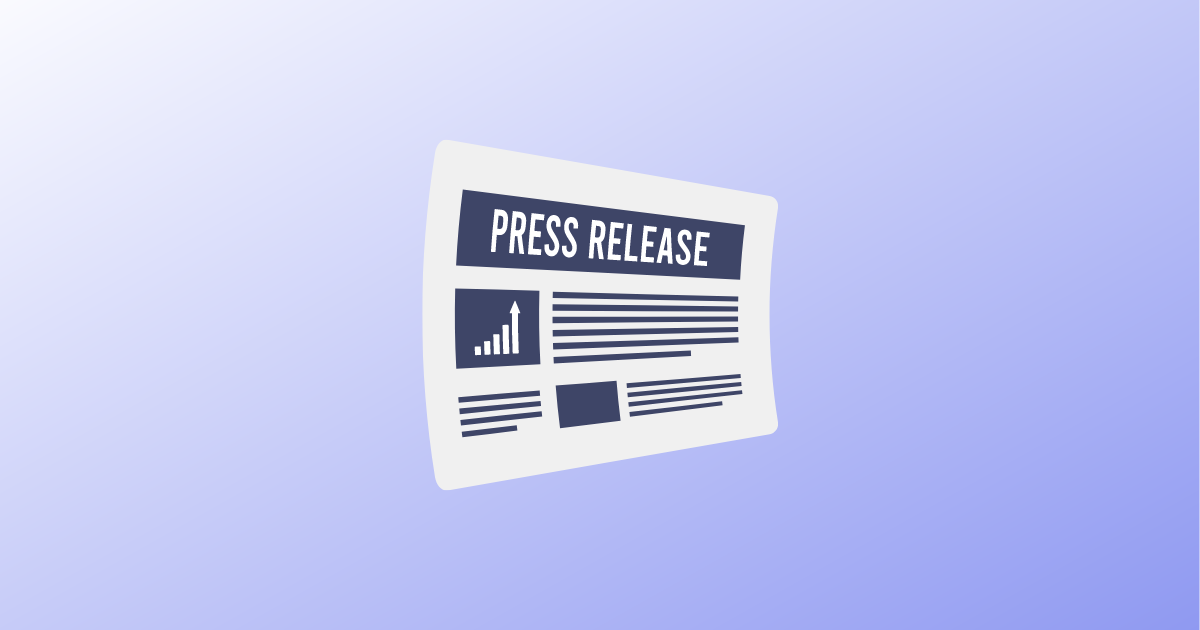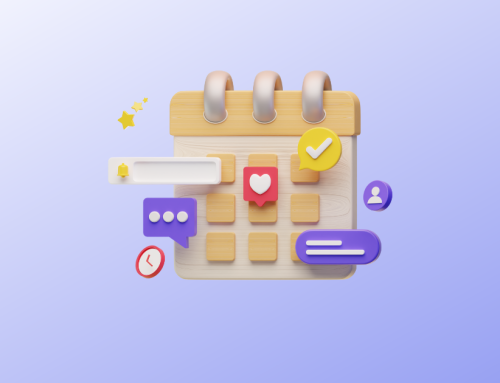A music press campaign is a crucial element in the promotion and visibility of an artist or band, designed to effectively introduce their music to a broader audience. This strategic engagement with the media aims to cultivate interest, generate coverage, and help an artist reach commercial and critical success. A music press campaign creates a compelling narrative around new releases or major events in an artist’s career by utilizing a suite of promotional tools, including press releases, exclusive interviews, media appearances, and review pitches.
Defining Your Release and Goals
Clarifying the essence and objectives of your release is essential to kickstarting a successful DIY press campaign. This clarity helps you target the right audience and achieve your desired outcomes.
Identifying the Purpose of Your Release
Understanding why you are releasing your music shapes every aspect of your campaign. Start by determining the primary intention behind releasing your track or album. Transform the personal motivation of your artistic expression into a marketable entity. Consider whether the purpose is to increase your visibility, connect with fans, or showcase artistic innovation.
- Increase Visibility: Aim to capture the attention of new listeners and the media. This purpose suits releases that feature a fresh sound or a new collaboration.
- Connect with Fans: Focus on deepening relationships with your existing audience. This purpose fits well with anniversary editions or acoustic versions that provide a more intimate experience.
- Showcase Artistic Innovation: Highlight your creative evolution. New genres or experimental sounds typically exemplify this goal.
Setting Clear, Achievable Goals
Once the purpose is clear, set specific, measurable, achievable, relevant, and time-bound (SMART) goals. These goals guide your press campaign and help you measure its success.
- Specific: Define what success looks like for this release. For example, aim to secure at least three features in music blogs.
- Measurable: Establish criteria for measuring success. Track the number of streams, downloads, or media mentions.
- Achievable: Set realistic targets based on your current following and industry connections.
- Relevant: Ensure your goals align with your long-term career aspirations.
- Time-bound: Set a deadline for achieving these goals to maintain momentum and focus.
By thoughtfully defining your release and its goals, you create a solid foundation for your DIY press campaign, allowing for targeted and effective promotion strategies. Following these structured steps ensures a coherent approach, facilitating connections with your existing fan base and potential new listeners.
Materials Needed for a Press Campaign
You must gather specific materials and tools to launch your next release’s effective DIY press campaign. These materials help you efficiently manage and deploy your promotional efforts to generate maximum impact.
Digital Tools and Software
Invest in email marketing platforms like Reply.io to send emails or Promoly to send music campaigns. These services provide scheduling, automation, and analytics features, which are essential for tracking the effectiveness of your campaign. Create compelling email sequences that keep your audience engaged and informed about your release dates, behind-the-scenes content, and exclusive updates.
Leverage Social Media Management Tools such as Hootsuite or Buffer. These tools help schedule posts, track engagement rates, and analyze audience interactions across platforms like Facebook, Instagram, and Twitter. Consistent and strategic social media posts increase visibility and strengthen your fanbase’s connection.
Use Graphic Design Software like Adobe Photoshop or Canva. High-quality visuals are crucial for catching your audience’s and industry professionals’ eye. Design engaging cover art, promotional posters, and social media graphics that align with the theme of your release.
Adopt Data Analytics Tools like Google Analytics. Understand your audience’s demographics and what content resonates with them, and refine your strategies based on data-driven insights. Analyzing traffic to your official site or social media pages can tell you where to focus your promotional efforts more effectively.
Written Materials and Press Kit Components
Prepare an Engaging Press Release. This document should summarize the essential information about your music release, including the release date, background information about the album or single, and any relevant details highlighting its uniqueness. Tailor your press release to spark the interest of music journalists, bloggers, and industry influencers.
Develop an Electronic Press Kit (EPK). Your EPK should include:
- Bio: A short, compelling artist biography that gives context to your music career.
- Photos: High-resolution images suitable for publishing in articles or promotional materials.
- Music Samples: Include links to streaming platforms where your music can be accessed or embed tracks directly within the EPK.
- Contact Information: Display your contact information or your management’s to make it easy for press contacts to reach out.
Create Fact Sheets and FAQs. These documents help journalists write more accurately about your release by providing them with detailed, straightforward facts and preemptively answering common questions.
Gathering these materials provides a robust basis for your DIY press campaign, ensuring you have all the essential components ready to execute a successful launch. By preparing thoroughly, you keep your campaign organized and poised to capture the attention of the music industry effectively.
Planning Your Press Campaign
Launching a DIY press campaign requires meticulous planning and precise scheduling. As you prepare to promote your next release, focusing on timing and significant checkpoints enhances the efficiency of your campaign.
Timeline: When to Start Your Campaign
Starting your press campaign at the right time maximizes exposure and engagement. Initiate your campaign eight to twelve weeks before the release date. This lead time allows ample opportunity for generating buzz and securing media placements. Highlight three phases:
- Pre-launch (8-12 weeks before release): Focus on crafting press releases and preparing email lists. Then, figure out who should get priority. Start drip-feeding your campaign.
- Launch (Release week): Continue outreach to journalists and influencers, reminding them about your pitch and release date.
- Post-launch (4-8 weeks after release): Follow up with additional stories and updates to maintain interest.
Key Milestones in the Campaign Timeline
Identifying key milestones helps track the campaign’s progression and ensures no missed opportunities. Mark these essential dates:
- Announcement Date: Officially reveal your upcoming release to generate initial interest.
- Media Outreach Start: Begin sending your press releases and EPKs to your targeted contacts list.
- Release Date: The day your project goes live, focus on promoting it across all your platforms.
- Review and Follow-up: Two weeks after the release, assess the impact of your campaign and engage with any feedback or press received.
Each milestone acts as a checkmark for evaluating the campaign’s success and impact. Adjust your strategies to maintain momentum and keep your target audience engaged.
Crafting Your Message
Crafting the right message is crucial in a DIY press campaign. This section guides you through developing a story that resonates and conveys your messages effectively to maximize the impact of your next release.
Developing a Compelling Narrative
Craft a narrative that captures the essence of your brand and music. This narrative should be authentic, engaging, and resonate with your target audience. Start by pinpointing the unique aspects of your music—be it the lyrics, the production style, or the inspiration behind your songs. Narratives that share personal journeys, challenges overcome, or the passion that drives your music connect deeply with audiences.
Focus on these three elements to build your narrative:
- Authenticity: Ensure your story reflects true personal or artistic sentiments.
- Relevance: Tailor your story to align with interests or current trends relevant to your audience.
- Emotion: Incorporate emotional elements that invoke curiosity, empathy, or excitement.
For example, if significant personal experiences inspired your album, discuss these in a way that highlights universal themes such as resilience or hope. If you’re known for a particular sound or style, explain the creative process or the influences that shape your music.
Tips for Effective Messaging
Effective messaging is not just what you say but how you say it. Here are vital tips to ensure your message stands out and is received as intended:
- Be Consistent: Maintain a consistent tone and style across all communications. Consistency helps in building trust and recognition.
- Be Clear and Concocal: Avoid jargon unless your audience knows it. Simple, straightforward language often has the most impact.
- Be Concise: Deliver your message in as few words as possible. This makes your message easier to understand and more memorable.
Use these strategies in your DIY press campaign to create messages that inform, captivate, and motivate your audience to engage with your music. Ensuring the narrative is compelling and effective messaging sets the stage for a successful release.
Creating Press Materials
Crafting effective press materials is a crucial next step in your DIY press campaign. This content gives you the tools to capture the media’s attention and ensure your release stands out.
Designing a Professional Press Kit
Start with a polished press kit. This is your primary tool to make a memorable impression on journalists and influencers. A professional press kit includes high-resolution images of the artist, well-produced music samples or links, and a captivating artist biography. Ensure every component reflects the artist’s brand and artistic vision, reinforcing the narrative you introduced during your campaign’s planning stages.
Incorporate visually appealing elements. Use clean, professional layouts and include compelling cover art representing the release. Templates from platforms like Canva or Adobe Spark aid in maintaining visual consistency and professionalism without requiring extensive graphic design skills. Opt for a unified color scheme and typography that aligns with your overall branding.
Essential Elements of a Press Kit
Biography. Provide a concise, up-to-date biography that gives insight into the artist’s background, influences, and unique selling points. Make the bio engaging by focusing on storytelling elements that connect with your target audience. If the artist has a compelling journey or specific achievements, highlight these.
Music samples. Select tracks that best represent the artist’s current project. These should showcase the breadth and depth of their work. Links to streaming platforms or embedded audio files allow busy journalists easy access.
High-quality photos. Include various images, with image crafting and press material design, and a diverse range of artist photos like portraits, in-action shots, and behind-the-scenes captures. These should all be professionally taken and demonstrate the artist’s persona and the release’s theme.
Press releases and media coverage. Feature previous press releases to show how the artist has been portrayed in the media. If available, include positive reviews and articles to build credibility and intrigue.
Contact information. List contact details so the media can reach out effortlessly. Include the artist’s manager, publicist, and record label contact details, ensuring they remain accessible for follow-ups and interviews.
By following these guidelines, you ensure your press materials are not only comprehensive but compelling, setting a solid foundation for your release’s success.
Tips for Creating Visually Appealing Press Kits
A standout press kit can make a difference in effectively promoting your next release. Here are some guidelines to ensure your press kit looks professional and is compelling.
Choose a Consistent Theme
Establish a theme that reflects your brand and your music. This theme should be consistent across all press kit elements, including colors, fonts, and layout styles. For example, if your music has a serene, acoustic vibe, soft pastels and a clean font like Arial or Helvetica might enhance the overall aesthetic of your press kit.
Incorporate High-Quality Visuals
Include high-resolution images such as artist photos, album cover art, and potentially images from past performances. Ensure these images are at least 300 DPI. High-quality visuals not only enhance the attractiveness of your press kit but also speak to your professionalism.
Use Clear, Engaging Text Layout
Organize the content in your press kit to be easy to read and visually engaging. Use headings, subheadings, and bullet points to break up the text, making it easier for recipients to scan and find the most essential information. Keep your biography and music descriptions concise and exciting to engage the reader.
Include Essential Components
Make sure your press kit includes crucial elements such as:
- Artist Biography: A brief yet informative biography that gives readers insight into who you are as an artist.
- Music Samples: Link downloadable or streaming samples of your music, ensuring they are easily accessible.
- Press Releases: Any current or past press releases that detail significant achievements or milestones.
- Contact Information: Clearly state your contact information, including email, phone number, and social media handles.
Personalize Your Kit for Different Audiences
Tailor your press kit to suit different stakeholders, such as journalists, bloggers, promoters, or radio hosts. Highlight aspects of your music or career that will be most relevant to them. If addressing radio hosts, focus on your most radio-friendly tracks and any radio play you have already received.
Applying these tips will help you design a press kit that looks visually pleasing and effectively communicates your artistic narrative to your target audience. Maintaining visual clarity and consistent branding will make your press kit stand out in the bustling music industry.
Identifying the Right Media Outlets
After crafting an eye-catching press kit, the next crucial step involves identifying the right media outlets. This process ensures your campaign reaches the most relevant audience, amplifying the impact of your release.
Researching Relevant Media Contacts
Identifying the relevant media contacts starts with research. Music blogs, industry podcasts, and genre-specific magazines represent key platforms where your press campaign could gain traction. If targeting a specific area is crucial, use online tools to find media contacts segmented by industry, genre, and geographical location.
Create a list of media outlets that align with your music style and audience. For instance, a hip-hop artist might target platforms like Complex or XXL, while an indie musician might look towards Pitchfork or Stereogum. Checking past coverage can also provide insights into which artists a particular outlet is more likely to feature.
Traditional Vs. New Media: Pros and Cons
Choosing between traditional and new media involves understanding their advantages and limitations. Traditional media includes television, radio, and print publications, while new media broadly refers to digital platforms like social media, online music blogs, and streaming service playlists.
Traditional Media:
- Pro: Establishes credibility and reaches a broad demographic.
- Con: Securing coverage without established connections is often more costly and challenging.
New Media:
- Pro: It is easier to tailor specific content to niche audiences and generally less expensive.
- Con: It may not provide the same level of prestige as traditional media.
For a DIY press campaign, new media often offers more flexible and accessible options, especially for emerging artists. However, integrating a mix of both can maximize your campaign’s reach and effectiveness. For example, targeting local radio stations and regional magazines while engaging with popular music blogs and social platforms covers a broad spectrum of potential listeners.
Pitching to Journalists and Media Outlets
After crafting professional press materials, targeting the right audience becomes crucial. The next step involves directly reaching out to journalists and media outlets to get your release the visibility it deserves.
How to Write an Engaging Pitch Email
Craft a Compelling Subject Line:
Ensure the subject line grabs attention while clearly stating the purpose. Include the artist’s name and briefly mention what’s inside, like “New Release from [Artist Name]—Exclusive Listen Inside.”
Personalize Your Introduction:
Address the journalist by name, and mention any previous articles that resonated with you. This personal touch shows you’ve done your assignments and aren’t sending mass emails.
Concisely Describe Your Offering:
In one paragraph, summarize what you are promoting, its unique aspects, and why it matters to their readership. Use specifics like the release date, genre, and any notable collaborations.
Include a Clear Call to Action:
Specify what you are asking for—an album review, an interview, or a feature article, for example. Then, suggest a next step to make it easy for them to respond.
Provide Accessible Press Materials:
Link to your press kit that includes high-quality photos, a bio, music samples, and contact information. Ensure these materials are easy to access and professionally presented.
Timing Your Pitch Perfectly
Understand Publication Timelines:
Research and respect the journalist’s deadlines. Magazines often work months in advance, while blogs might schedule weeks ahead. Send your pitch according to these timelines to increase your chances of getting featured.
Avoid Busy Periods:
Stay clear of pitching during major holidays (like Christmas week!) or events when journalists are likely inundated with news. Your release might get more attention during quieter times.
Follow Up Appropriately:
If you haven’t received a response within a week, send a polite follow-up email. Keep it brief and direct, expressing your continued interest in their feedback.
By integrating these strategies, you stand a better chance of capturing the attention of journalists and securing media coverage, enhancing the reach and impact of your music release.
Follow-Up Strategies
After perfecting press kits and pitching to media outlets, crafting effective follow-up strategies plays a crucial role in sustaining the momentum of your press campaign. Follow-up actions ensure your release garners the attention it deserves while maintaining professional relations with media contacts.
Schedule Timely Follow-Up Emails
Initiate the first follow-up within a week after sending your initial pitch. This timing strikes a balance, allowing journalists enough time to review your materials without your message seeming stale. For maximum impact, tailor your follow-up email to reference specifics from your original pitch, demonstrating genuine engagement and interest.
Use Social Media for Soft Reminders
Use the power of social media by posting updates or snippets about your release. Tag relevant media contacts or outlets in your posts. This method is a subtle reminder of your campaign and can enhance visibility and engagement without the direct pressure of traditional follow-up methods.
Offer Additional Information or Exclusives
Sometimes, media professionals seek more depth or an exclusive angle to cover your story. Offering additional information or exclusive content in your follow-up can provide the added value they need to run a feature on your release. Ensure these offers are highlighted when you reach out again.
Track and Analyze Responses
Keep a record of when and how media contacts respond to your follow-ups. Use this data to refine your approach in real time. If responses are positive, note what worked for use in future campaigns. Conversely, consider adjusting your follow-up technique or offer if the response is lacking.
By ensuring timely, tactful follow-ups and offering additional value, you enhance the potential for successful coverage of your press campaign. Each follow-up is a step toward building lasting relationships with the media, increasing the likelihood of future collaboration.
Utilizing Social Media Effectively
Leveraging social media significantly enhances the visibility of your press campaign. This segment explores strategic integration and best practices for optimizing social media efforts.
Integrating Social Media with Press Outreach
Integration starts with linking your press materials directly on your social media platforms. Sync your press release schedule with social media posts to create a cohesive narrative across all channels. For instance, if you announce a new release on your website, share teaser snippets or behind-the-scenes content on Instagram or Twitter simultaneously. This method ensures your message resonates consistently with your audience, improving recall and engagement.
Use social media analytics to track which types of content generate the most engagement and tailor your outreach accordingly. Platforms like Facebook and Instagram provide insights into post reach, engagement rates, and audience demographics. This data enables you to fine-tune your campaign to better align with audience preferences, potentially increasing the effectiveness of your press releases.
Collaborations with influencers or other artists in your genre can also amplify your message. Identify critical influencers aligning with your brand and orchestrate coordinated posts or live events highlighting your release, extending your reach to their followers.
Best Practices for Social Media Content Creation
Focus on creating high-quality, engaging content that speaks directly to your target audience. Use high-resolution images, compelling video clips, and concise, captivating captions encouraging interaction. For example, incorporate user-generated content, like reactions or covers from your audience, to foster a community feeling and enhance engagement.
Consistency is crucial in posting frequency and visual style. To reinforce brand identity, maintain a consistent color scheme, font, and layout across your posts. Planning your content calendar ensures a steady stream of content during your campaign and helps you maintain a balanced mix of promotional and organic posts.
Engage actively with your audience. Respond to comments, participate in conversations, and ask for feedback. This active engagement boosts your campaign’s visibility through increased interaction metrics and builds meaningful relationships with your audience, increasing loyalty and support for your releases.
Optimizing your use of social hotspots, like Instagram stories or Twitter polls, introduces interactive elements that can make your campaign more engaging. These features offer direct ways to interact with your music and encourage followers to share your content, effectively widening your reach.
By implementing these techniques, you ensure your social media strategy aligns effectively with your press outreach efforts, maximizing the exposure and impact of your next music release.
Troubleshooting Common Issues
You might encounter a few hurdles when conducting a DIY press campaign for your music release. Addressing these effectively ensures your campaign remains on track and achieves its intended impact.
Dealing with Non-Responses
Facing non-responses from media outlets is common but manageable. When you notice a lack of replies:
- Reevaluate Your Pitch: Ensure your email is concise, personalized, and directly relevant to the recipient. Review and revise your subject lines or email content if necessary.
- Timing Is Key: If initial emails go unanswered, consider your timing. Media professionals have peak busy times, often around major events or holidays. Timing your follow-up emails during quieter periods may increase your chances of receiving a response.
- Persistence Pays Off: Follow up at least twice, but space out your communications—a second email after a week and a third email after another week. Send a polite and clear message, which can help keep your pitch on their radar without being pushy.
- Diversify Your Targets: If non-responses persist, expand your list of contacts. Identifying additional journalists and media outlets who might show interest in your music genre can increase your chances of engagement.
Adapting to Negative Feedback
Handling negative feedback constructively can turn potential setbacks into valuable learning opportunities.
- Analyze the Feedback: Clearly understand the concerns or criticisms raised. Specific issues might relate to the music quality, the angle of your press release, or the compatibility of your message with the medium’s focus.
- Engage in Dialogue: If the feedback comes directly from a journalist or reviewer, initiate a conversation. Respectfully ask for detailed insights into their opinions. This interaction can foster better relations and lead to more tailored and successful future submissions.
- Carry out Changes: Use this feedback to refine your approach. Consider revising your press materials or campaign strategy accordingly if multiple sources mention a similar issue.
- Stay Positive and Professional: Always respond professionally to positive or negative feedback. Maintaining a positive demeanor can help preserve relationships with the media and build your reputation as a thoughtful and responsive artist or label.
These troubleshooting tips can significantly enhance the efficacy of your press campaign, ensuring that you navigate common obstacles with tact and strategy.
Measuring the Success of Your Campaign
After executing a DIY press campaign for your music release, the next crucial step involves measuring its success. This assessment helps you understand the campaign’s impact and guides your efforts in future projects.
Tools and Metrics for Tracking Performance
To gauge the effectiveness of your press campaign, you rely on specific tools and metrics.
- Use Analytics Software: Platforms like Google Analytics help track website visits, user behavior, and engagement from your press releases. If your press material directs to a specific webpage, monitoring spikes in traffic post-release offers insights into the campaign’s reach.
- Social Media Insights: Tools provided by social media platforms can show metrics such as likes, shares, comments, and the reach of your posts. For instance, if you have promoted your release on platforms like Facebook or Twitter, examining these metrics reveals how well your content resonated with the audience.
- Media Monitoring Services: Services like Meltwater or Mention can track where your press release is published and mention your release across the web. This includes monitoring both traditional and digital media outlets.
- Email Marketing Software: If you use email campaigns as part of your press strategy, software like Mailchimp provides data on open rates and click-through rates, which help assess how compelling your message was to your audience.
These tools provide a quantitative look at your campaign’s effectiveness, identifying how wide and deep your press release penetrated your target market.
Evaluating What Worked and What Didn’t
Understanding the success and shortfalls of your press campaign involves a qualitative review.
- Review Media Outcomes: Assess which media outlets picked up your release and which ignored it. Analyzing this might reveal if the target media lists were accurate or if adjustments were needed.
- Feedback Analysis: Collect feedback from your audience and partners about the press materials. Did they find the press kits engaging and informative? This feedback is crucial for improving future materials.
- Performance Comparison: Compare the outcomes of different components of your campaign. For example, did traditional media coverage generate more awareness than social media promotions? Understanding these dynamics will help you allocate resources effectively for future campaigns.
- Adaptation to Feedback: If you received any negative feedback or less engagement in certain areas, consider these areas for improvement. Adjusting your strategies based on this feedback helps refine future campaigns.
By evaluating what worked and what didn’t, you tailor your strategy to meet your goals better, making each campaign more successful than the last.
Conclusion
Launching your press campaign for a music release is dynamic and rewarding. You can significantly boost your project’s visibility with the right mix of traditional and new media. Remember, the key is in your preparation—crafting visually appealing press kits to personalizing pitches for various media outlets. As you go through the process, keep your communications clear and follow-ups timely. Don’t get discouraged by setbacks; instead, use them as learning opportunities to refine your strategy. By measuring the outcomes and continuously adapting, you’ll achieve better results and gain invaluable insights for future campaigns. You have all the tools to create a buzz and make your mark in the music industry. So put your best foot forward—your next big release deserves the spotlight!





